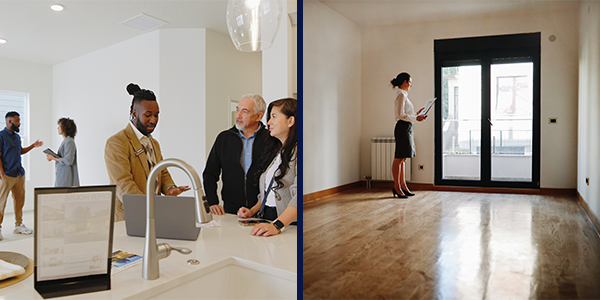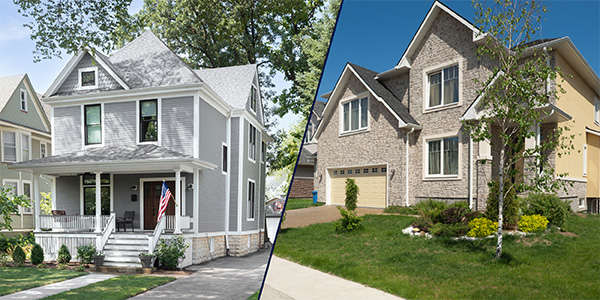Homebuyers
How to Choose a Home That's Right for You
May 1, 2018
There may be no such thing as the perfect home, but it is still vital to choose a home that suits as many of your wants and needs as possible. Viewing home after home can be incredibly overwhelming, especially if you are not sure which elements you should be paying attention to. When determining if a home is right for you, there are many things to consider before deciding to make that offer:
1. Know What You Want
It may be hard to judge different properties unless you have specific criteria in mind that you'd like them to meet. Sure, you may discover things you didn't even know you wanted along the way, but Forbes suggested at least knowing your deal breakers.1 If you let your real estate agent know what elements of a home or its surrounding area would result in a definite no from you, you won't have to waste time looking at properties that don't interest you.
2. Consider the Costs
It can also be a huge waste of time to shop for a home that is not in your price range. Applying for mortgage pre-approval can help you understand how much home you can afford. Understanding this can help you focus your search. A pre-approval occurs when a lender considers your current financial standing and tells you how much money it would be willing to loan you. If you shop for a home before getting pre-approved, you may be overjoyed to find your dream home only to find out you can't afford the mortgage it requires.
Beyond the hidden costs of buying a home - such as those pesky closing costs - there are also many added expenses you may not expect once the home is purchased. For example, Steve Jones, an associate broker with Crawford Olson Real Estate in Ohio, told Forbes that houses with vaulted ceilings are more expensive to heat.2 Consider any elements of the home that might require extra maintenance, as it could add up.
3. Assess the Neighborhood
The ideal property may still not be a good match if it is located in the wrong neighborhood. The first thing you have to think about is the general location of your home, whether you want something in the city, the suburbs, or a rural area. Zillow suggested considering the pros and cons of each.3 For example, a suburban neighborhood provides a quiet recluse from the hustle and bustle of the city, but you will need to be more dependent on your car. In a city, there are generally restaurants and shopping complexes within walking distance, but it will often be louder and more chaotic.
If you are interested in something in between an urban and suburban environment, New Home Source said urban in-fill neighborhoods are a great option.4 These neighborhoods tend to lie in between the city and suburbs. They are closer to the city, which makes it easier to take a trip downtown, while still offering the community atmosphere of the more far-off suburbs.
Beyond the type of neighborhood, you also want to think about what lies directly around your home. Zillow urged buyers to take note of neighborhood zoning laws and the presence of any empty lots nearby. It's possible the laws could allow a structure you'd find disruptive to be built on the empty lot or to replace a current property. In addition, Trulia advised buyers to pay attention to anything nearby that may bother them, such as noisy neighbors or the presence of a school.5
4. Don't Worry About the Interior Design
When you buy a home, you are not also wedded to the decor within it. Realtor.com urged buyers to try not to get bogged down in the icky color the current seller chose for the living room walls or the ridiculous artwork he has chosen to hang in the hallway.6 Take note of the layout and what will be left when the seller is gone, such as the quality of the floors and windows and the openness of the floor plan.
According to Trulia, an open floor plan is a great asset in a home. It allows you to be flexible and change the way a room is used if needed. Think about concepts like this one, rather than whether the couches are stained. Cindy Jones of Crawford Olsen Real Estate told Forbes it is much more costly to alter the floor plan of a home than it is to change out other aspects of the space.
5. Take Pictures
Realtor.com suggests bringing a camera when you view a house. After a while, the many properties you look at will blend, and it will feel impossible to keep them all straight. Photograph every room in every home you see. It will help jog your memory when it comes time to compare and contrast.
6. Don't Think Too Much About Selling Down the Road
Home buying expert Marianna Cusato told USA Today that too many homebuyers buy homes that don't offer them what they want because they are thinking about it as an investment rather than a place to live.7
"So we end up living in homes that don't meet our needs," she explained. "What we need to do now is live in a home that works for us."
Trulia said resale should not be the first thing on your mind, but you should also make sure not to buy something you know will be incredibly difficult to sell later on.
7. Trust Your Instincts
In the end, it's really about the way a home makes you feel. Many experts say the gut feeling a home gives you when you walk in the door is not something to ignore. The home you feel most comfortable in may not have the precise amenities you imagined. Still, if you can see yourself living there and the home is in your price range, it may be time to make an offer.
Sources
1 Forbes
2 Forbes
3 Zillow
4 New Home Source
5 Trulia
6 Realtor.com
7 USA Today





 Smart Moves Start Here.
Smart Moves Start Here.